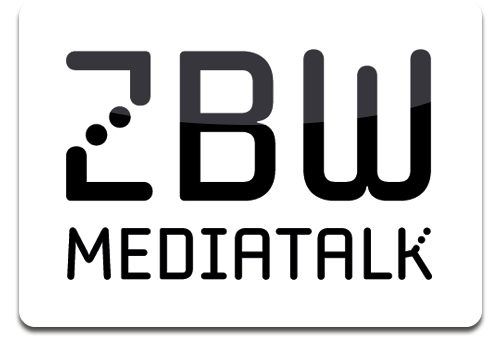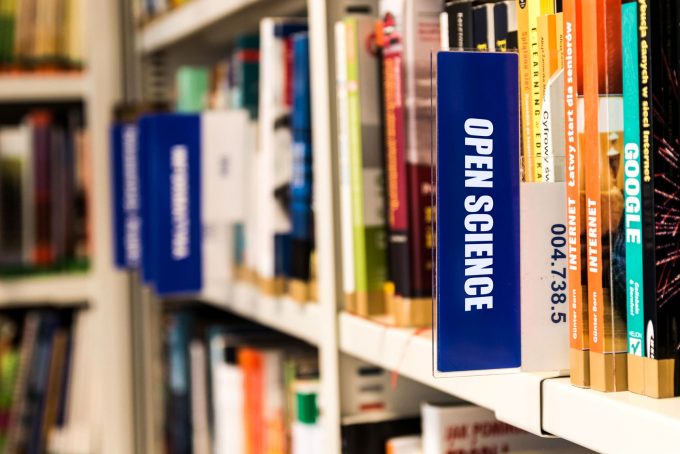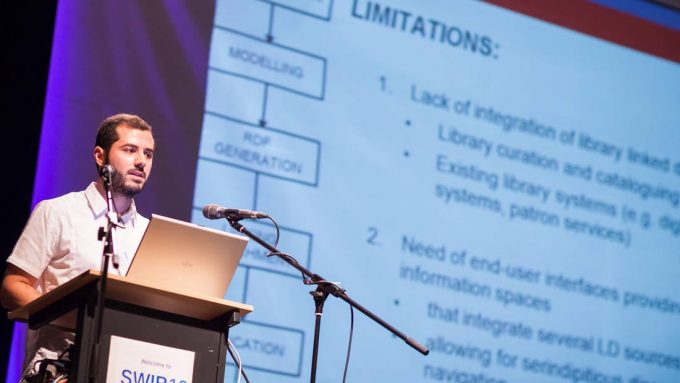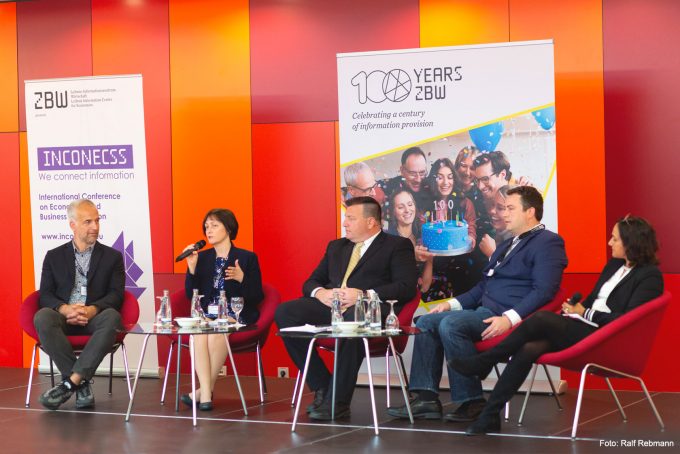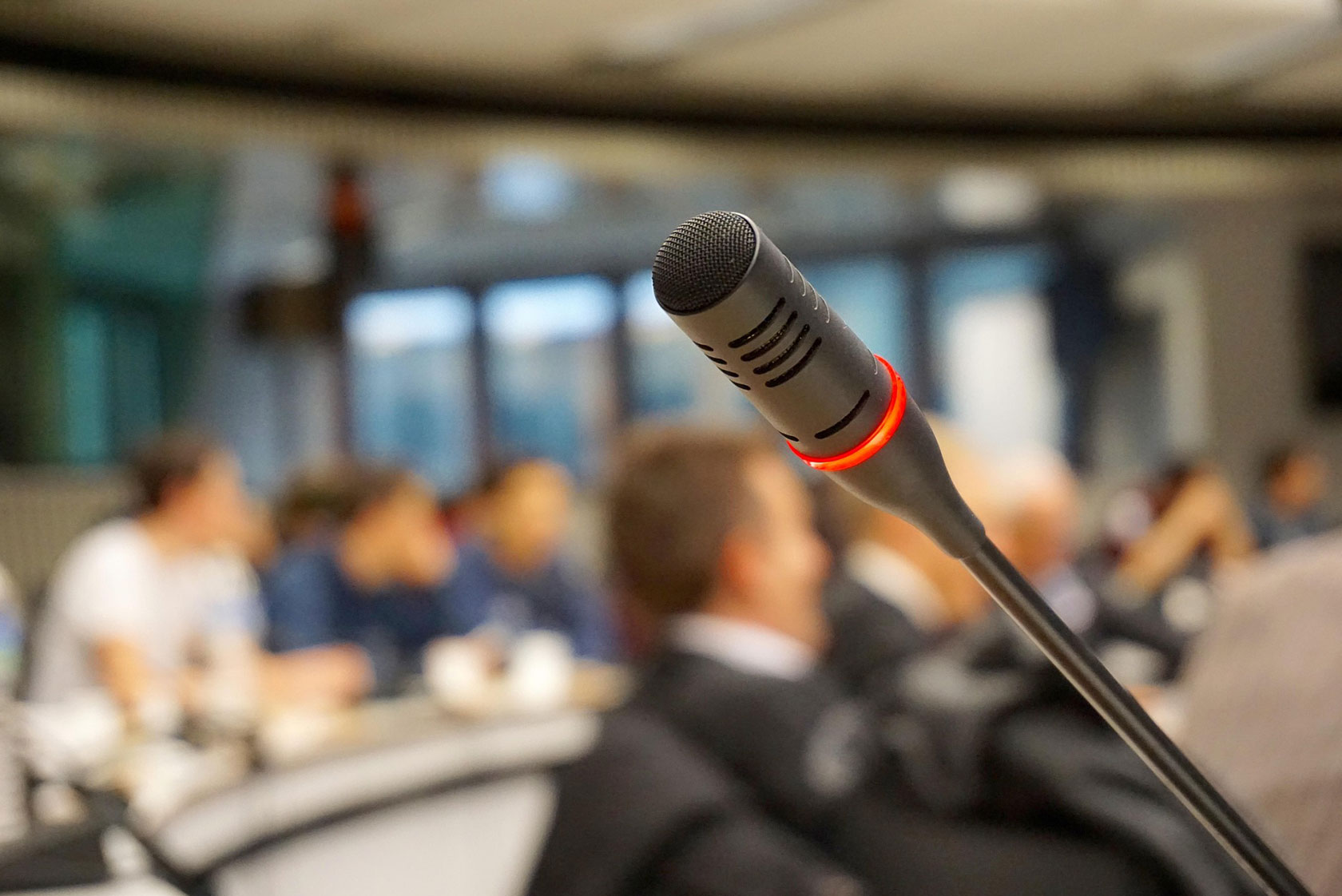
Open Access Days 2025: Goal Achieved – or how can it (Ever) be Accomplished?
What does Open Access promise and what does it cost? How can the crucial importance of open infrastructures be embedded as a collective core task? What could a new concept for financing Diamond Open Access look like? At the Open Access Days 2025, these and other questions were answered in lectures and workshops.
by Dr. Juliane Finger, Ronja Kuhlwilm, Olaf Siegert, Helene Strauß

This year’s Open Access Days took place from 17 to 19 September 2025 at the University of Konstanz. Its motto: ‘Mission Accomplished? Open Access and the Re/pro/duction of Inequality in Scientific Publishing’. More than 400 participants had the choice from three keynotes, 33 lectures, 27 workshops and an extensive poster session. The slides and posters can be found on Zenodo.
Below, we present some of the sessions and workshops that the ZBW team attended or actively organised:
Identifying and labelling
In the session ‘Identifying and labelling’, three Open Access projects were presented. First, Colin Sippl (University Library of Regensburg) reported on the further development of the Electronic Journals Library (EZB). The tool developed from a tool for displaying access authorisation for digital journals to a service that also provides an excellent overview of the landscape of Open Access journals. It now also provides a well-organised overview of the market for Diamond Open Access journals. The EZB lists a total of 120,000 journals, of which 20,000 are designated as Gold Open Access journals and 5,000 as Diamond Open Access journals. In addition, there is a regular exchange of data with the Directory of Open Access Journals (DOAJ).
The second presentation, ‘Creating equal conditions for Open Access journals – open research information in OJS journals’ by Zeynep Aydin and Christian Hauschke (TIB Hannover), highlighted the BMFTR project KOMET. In this project, various functions that are relevant for the collection and publication of structured citation information and persistent identifiers (IGSN, ORCID, PIDINST, ROR) are added to the Open Journal Systems publication software OJS.
The third presentation was given jointly by Lea Ferguson (Helmholtz Open Science Office), Bernhard Mittermaier (Jülich Research Centre) and Joshua Shelley (Potsdam University Library). They reported on the German Research Foundation (DFG) project Transform2Open, which examined and developed various aspects of the financial and organizational implementation of Open Access. Among other things, a guide for decision-makers at academic institutions was created that includes specific and operational recommendations for monitoring publication costs. In addition, a modular reference model for the information budget was developed as part of the project and supplemented with recommendations for organizational implementation. Furthermore, Open Access workflows were analysed and recommendations for optimising them derived. Transform2Open also examined the role of Open Access in library education and developed a competence matrix for various career and training levels. All in all, an impressive amount of work results for a single DFG project!
Open Access as an organisational and institutional challenge
The workshop ‘Open Access as an organisational and institutional challenge’, dealt with the sustainability of science-led Open Access infrastructures. These often play an important role in the scientific publication system, but face the challenge of obtaining sustainable financing, especially when they have been created with third-party funding that is coming to an end. The workshop began with short keynote presentations on the Alliance study on Open Access infrastructures, SCOSS, DeepGreen, the ECB, the Open Access Monitor and open-access.network. Afterwards, small groups discussed the aspects ‘financing’, ‘governance’ and ‘communication’. It became clear that organising a decentralised financing by scientific institutions could be one option for achieving sustainability of OA infrastructures. However, this requires investing a lot of work, especially in the areas of governance and communication.
Diamond Open Access: Perspectives
The session ‘Diamond Open Access: Perspectives’ was moderated by Daniela Hahn and included three presentations that introduced perspectives on Diamond Open Access. The first one, entitled ‘The Germany Fund Diamond Open Access (DeFDOA). A Proposal’, had Bernhard Mittermaier presenting a new concept for financing Diamond Open Access: the Germany Fund Diamond Open Access (DeFDOA). This fund stipulates voluntary participation by institutions and consortia. The starting point is 2% of the turnover volume of transformative agreements for participating institutions, which is then used for Diamond Open Access for journals and books. These funds would be collected and disbursed by a central office. A committee would decide on the allocation of funds according to formal criteria defined before; a bidding process for selecting journals and books for funding would be established. The feasibility of implementing such a fund and its further details still need to be clarified.
The second presentation, entitled ‘Diamond Open Access – Report from Linguistics,’ was a progress report from the field of linguistics by Miriam Butt. The first Diamond Open Access publications in linguistics were published as early as 30 years ago by CSLI Publications (the LFG Proceedings were mentioned here). Miriam Butt also pointed out that CSLI Publications is a good example of a publisher that had to generate money to pay its employees, but otherwise also advocated low costs for authors and readers and enabled Open Access publications. The Communication, Information, Media Centre (KIM) also takes on various publications from CSLI Publications, some of which are published by the library’s own publishing house, PubliKon.
In the third presentation, Thomas Stäcker introduced a DFG-funded project under the title ‘Diamond Open Access Service Centre (SeDOA): Building a German Diamond Capacity Centre’. Being part of the European Diamond Capacity Hub (EDCH) network, SeDOA is the German Diamond Capacity Centre. Fifteen institutions are involved in SeDOA, which have split the various work packages among themselves. At the beginning of his presentation, Thomas Stäcker outlined the problems of commercial Open Access and emphasised the need for the Service Centre to serve as an advisory and support body. He stressed that SeDOA should bring the service to the people, not the people to the service.
What Open Access promises – What Open Access costs – What can be expected from Open Access
An exciting workshop on the topic of ‘What Open Access promises – What Open Access costs – What can be expected from Open Access’ took place on Thursday, 18 September 2025. It was initiated by Clara Ginther (University of Veterinary Medicine, Vienna), Jasmin Schmitz (ZB MED), Andreas Ferus (Academy of Fine Arts Vienna) and Bernhard Mittermaier (Jülich Research Centre). In a protected space, the workshop initiators offered the opportunity to discuss the objectives, reality and aspirations of Open Access. The provocation technique was used to open up new perspectives with deliberately exaggerated theses. Lively discussions and results emerged in small groups, which were then discussed intensively in the larger group. In the end, all participants agreed that Open Access is an important part of publication culture, but that libraries alone cannot create the transformation on their own. Researchers must be included in the discussion, particularly when it comes to rethinking the culture of reputation. As a result, the workshop initiators announced that the mailing list wisskomm would be reactivated.
From consortium to consortium? Successful reuse and further development of consortium funding models for Diamond OA
The workshop on the reuse of consortium funding models for Diamond OA focused on the KOALA model. KOALA has been successfully tested at the TIB – Leibniz Information Centre for Science and Technology and University Library since 2023 as part of the project ‘Establishing Consortial Open Access Solutions’ (KOALA for short).Now, it is also being continued at the Saxon State Library – Dresden State and University Library (SLUB Dresden). The discussion focused on how this model can be transferred to different institutional and national contexts and what adjustments are necessary to do so. Opportunities, challenges and scenarios for reuse were collected in small groups – covering from individual institutions to nationwide consortia. It became clear that collectively supported funding models offer a promising basis for securing Diamond OA publications in the long term.
Dimensions of inequality
Barriers faced by weakly affiliated researchers – for instance authors who publish outside privileged institutions – were examined as part of the IDAHO project run by the TIB – Leibniz Information Centre for Science and Technology and University Library. The study that was presented during the session dimensions of inequality found that this group is particularly affected by exclusion, leading to epistemic injustice. Measures for operating journals more inclusively were derived based on a mixed-methods analysis. These include transparency and flexibility in publication fees, recognition of diverse affiliations, offering support in multiple languages, and simplification of submission processes. Furthermore, targeted training of editorial teams was identified as a key lever for avoiding unconscious biases.
Open infrastructure – with your support
Marco Tullney’s keynote speech, ‘Open infrastructure – with your support’, emphasised the central importance of open infrastructures for Open Access (OA) and Diamond Open Access (DOA) as a core collective task of research institutions – and not just as a side project of committed individuals. Despite many appeals, there is still a lack of sustainable, institutionally embedded solutions. Choosing a user-oriented, decentralised approach that further develops existing services and relies on institutional cooperation seems to be crucial. He particularly emphasised the challenge of obtaining long-term, non-project-based funding. Open infrastructure requires transparency and communication, but also experimentation and agile development of small elements although their full scope of use cannot always be known in advance. In addition to outlining the problem, Tullney pointed out various starting points for improvement. Opportunities for participating in open infrastructures exist at various levels – from using them and providing feedback to active participation in consortia or committees. The presentation stressed that even small steps and contributions help to strengthen open infrastructures in the long term – joint action is crucial.
Conclusion
Overall, this year’s Open Access Days were once again a very informative event, which also offered many opportunities for networking and professional exchange. Next year, the conference will take place in Austria at the Johannes Kepler University Linz.
This might also interest you:
- Open-Access-Tage 2024: DEAL, Diamond and beyond
- Open Access Barcamp 2025: From Best Practices and Visions to Triage in Publication Funds
- Barcamp Open Science 2025: From Threats to Collective Resilience
Dr. Juliane Finger is the Open Access officer at ZBW – Leibniz Information Centre for Economics. She is product manager of Open Library Economics and heads the BMFTR project OLEKonsort, which aims to establish a financing consortium for Diamond Open Access. She can be found on ORCiD.
Portrait: Juliane Finger©
Ronja Kuhlwilm is project assistant for the BMFTR project OLEKonsort at the ZBW – Leibniz Information Centre for Economics.
Portrait: Ronja Kuhlwilm©
Olaf Siegert heads the Publication Services Department of the ZBW – Leibniz Information Centre for Economics. He is also active in various committees and networks on the subject of Open Access, including the Leibniz Association, the Alliance of Science Organisations and LIBER.
Helene Strauß is a project officer for the DFG-funded project SeDOA at the ZBW – Leibniz Information Centre for Economics. Previously, she created videos, online courses and guides on Open Access as part of the open-access.network project. She can be found on ORCiD.
View Comments

Promptathons: Potential for Libraries – and for Open Science?
Promptathons are a relatively new event format that can be used by libraries both...
